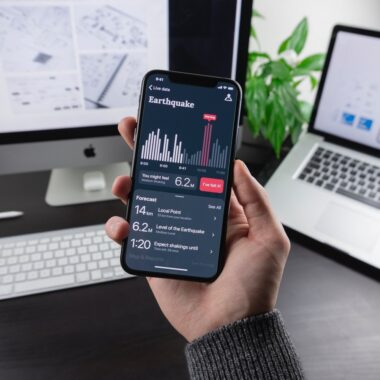Unleashing Projection Potential: A Guide to Developing Projector Software

Projector software refers to a suite of applications designed to enhance the functionality and versatility of projectors. At its core, projector software acts as an interface between the user and the projector hardware, enabling advanced control, content management, and interactive capabilities. These software solutions can range from simple control utilities to powerful multimedia playback platforms and even sophisticated projection mapping tools.
Benefits of Utilizing Projector Software
Incorporating projector software into your projection setup offers numerous advantages over traditional projector usage:
| Benefit | Description |
|---|---|
| Enhanced Control | Projector software provides users with granular control over various projector settings, enabling precise adjustments to brightness, contrast, color temperature, and more. |
| Streamlined Workflows | By integrating content management, scheduling, and automation features, projector software streamlines workflows, saving time and increasing efficiency. |
| Enriched Content Display | Advanced multimedia capabilities allow for the seamless integration of various content formats, including video, images, presentations, and interactive elements. |
| Collaborative Features | Many projector software solutions offer collaboration tools, enabling real-time annotation, screen sharing, and audience interaction during presentations or meetings. |
| Scalability | Projector software often supports multi-projector setups, enabling seamless edge blending, warping, and synchronization for large-scale or immersive displays. |
The Projector Software Development Landscape
Key Considerations for Developers
When developing projector software, developers must consider several critical factors to ensure a seamless and optimized user experience:
- Hardware Compatibility: Ensuring compatibility with a wide range of projector models and brands is crucial, as projectors may have varying specifications and communication protocols.
- Performance Optimization: Efficient resource management and optimized rendering techniques are essential to maintain smooth performance, especially when handling high-resolution content or real-time graphics.
- User Interface Design: A well-designed and intuitive user interface can significantly enhance the overall experience, making projector control and content management more accessible and user-friendly.
- Security: Implementing robust security measures, such as encryption and access controls, is vital to protect sensitive data and prevent unauthorized access to the projector system.
- Cross-Platform Support: Developing projector software that can run on multiple operating systems (Windows, macOS, Linux) can expand its reach and cater to diverse user preferences.
Common programming languages and frameworks used for projector software development include C++, C#, Java, Python, and various multimedia libraries like OpenGL, DirectX, and FFmpeg.
Common Challenges and Solutions
During the development process, developers may encounter various challenges, such as:
- Hardware Compatibility Variations: Different projector models may have varying communication protocols, resolutions, and feature sets, making it challenging to ensure consistent behavior across devices. Developers should strive for modular and extensible software architectures that can accommodate diverse hardware specifications.
- Network Connectivity Issues: In scenarios involving networked projectors or remote control capabilities, reliable network connectivity is essential. Implementing robust error handling, automatic reconnection, and failover mechanisms can help mitigate connectivity-related issues.
- User Experience Optimization: Balancing feature richness with a streamlined and intuitive user interface can be a delicate task. Iterative user testing and continuous refinement based on feedback are critical to achieving an optimal user experience.
- Performance Bottlenecks: When dealing with high-resolution content, real-time rendering, or complex projection mapping scenarios, performance bottlenecks may arise. Profiling, code optimization, and leveraging hardware acceleration techniques can help alleviate these issues.
Exploring Different Projector Software Applications
Presentation and Collaboration Software
Projector software can significantly enhance the presentation and collaboration experience by offering a suite of powerful features:
- Screen Annotation: Real-time annotation tools allow presenters to highlight, draw, or annotate content directly on the projected screen, fostering better engagement and understanding.
- Wireless Content Sharing: Seamless wireless content sharing enables participants to easily share their screens, documents, or media from various devices, streamlining collaboration and minimizing setup time.
- Audience Interaction Tools: Interactive features like polls, quizzes, and question-and-answer modules encourage audience participation, making presentations more engaging and interactive.
- Presentation Management: Advanced presentation management tools enable the organization, sequencing, and remote control of slide decks, enhancing the overall flow and delivery of presentations.
Projection Mapping Software
Projection mapping is a cutting-edge technique that involves projecting visuals onto non-traditional surfaces, transforming everyday objects or environments into captivating displays. Projector software plays a crucial role in enabling this immersive experience:
- Content Warping: Advanced warping algorithms allow projected content to adapt and conform to the contours and irregularities of the surface, creating realistic and seamless visuals.
- Edge Blending: When using multiple projectors, edge blending techniques seamlessly blend the edges of adjacent projected images, creating a cohesive and seamless display.
- Multi-Projector Synchronization: Synchronized playback across multiple projectors is essential for large-scale projection mapping installations, ensuring a unified and visually stunning experience.
- 3D Projection Mapping: Some advanced projector software supports 3D projection mapping, enabling the creation of mind-bending visuals that interact with the physical environment.
Content Management and Playback Software
Efficient content management and playback are crucial in various projection scenarios, from digital signage to immersive experiences. Projector software provides powerful tools for streamlining these processes:
- Content Scheduling: Easily schedule and automate the playback of different content types (videos, images, presentations) based on predefined timelines or triggers.
- Playlist Creation: Create and manage playlists containing a sequence of multimedia content, enabling seamless transitions and looping for continuous displays.
- Remote Control: Control and monitor the playback of content remotely, enabling centralized management of distributed projection systems.
- Integration with Content Management Systems (CMS): Many projector software solutions offer integration with popular CMS platforms, allowing for efficient content updates and distribution across multiple displays or locations.
Advanced Applications (Optional)
Beyond traditional use cases, projector software is also finding applications in specialized fields:
- Medical Imaging: Projector software can be integrated into medical imaging systems, enabling high-resolution projection of diagnostic images and facilitating collaboration among healthcare professionals.
- Virtual Reality (VR): Projector software can be utilized in VR environments, enabling immersive and interactive experiences by projecting visuals onto curved or dome-shaped surfaces.
- Interactive Installations: In the realm of art and exhibitions, projector software can power interactive installations, enabling visitors to engage with and influence the projected visuals through gestures, movements, or other input methods.
Conclusion
Projector software acts as a powerful catalyst, unlocking the full potential of projection technology and enabling a wide range of applications. By understanding the diverse capabilities and considerations involved in projector software development, individuals and businesses can harness the transformative power of projection to create engaging, immersive, and visually stunning experiences. Whether it’s enhancing presentations, enabling projection mapping, streamlining content management, or exploring advanced applications, projector software opens up a world of possibilities limited only by imagination.
